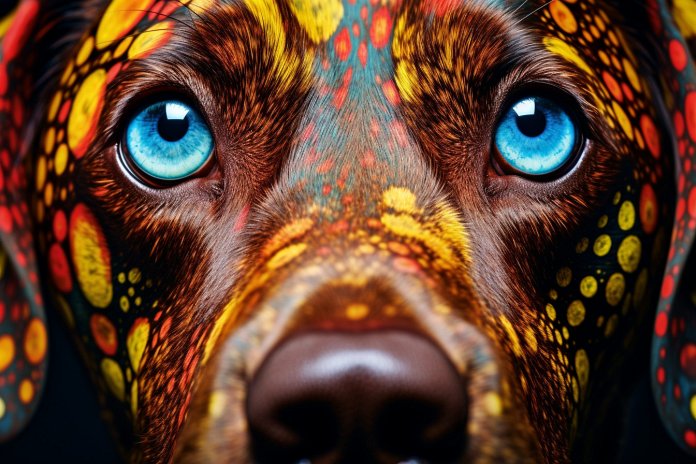
Did you know that dogs have an incredibly strong sense of smell? They can sniff out cancer even in its earliest stages, thanks to their 25 times more smell receptors than humans. In fact, their smelling abilities are about 100,000 times more capable than ours. If you’re interested in learning more about how dogs can sniff out cancer and what signs to look for, continue reading our ultimate doggo-nose guide.
Signs Your Dog Might Be Able to Sniff Out Cancer
Dogs can smell in parts per trillion, so it’s no surprise they can detect medical conditions like cancer. Cancer cells have a different smell than healthy cells, and dogs can pick up on this change in odor. If your dog sniffs certain spots on your body more often or shows an affinity for a specific spot, it could be a sign that they’re detecting a cancerous smell. Additionally, uncharacteristic behavior like obsessive licking or increased distress when smelling or licking a specific area might indicate something is off.
Body Language
Watch out for body language cues that your dog might be giving you, such as growling, being alert, barking, guarding, cowering, dropping ears, head turning, or head bobbing.
Other Signs
Other signs that your dog might be trying to communicate that they smell something strange include obsessive licking, uncharacteristic anxiety, frantic behavior, and nervousness.
The History of Dogs Smelling Cancer
Research suggests that dogs’ noses are so gifted that they can detect cancer in its earliest stages. In fact, trained dogs have been able to detect various types of cancer with an accuracy rate of over 95%. Dogs like Lucy, a Labrador Retriever mix, have even surpassed some lab tests used for diagnosing cancer. Lucy is now part of a large clinical trial called Medical Detection Dogs.
The Science Behind Dogs Smelling Cancer
Dogs have an incredible sense of smell due to their 25 times more smell receptors than humans. Their olfactory cortex, which processes smells, is about 40 times larger than ours. Cancerous cells release different metabolic waste products than healthy cells, resulting in different smells. Dogs can recognize these differences and identify cancer in its earliest stage.
Training Your Dog to Smell Cancer
Training a dog to detect cancer and other illnesses requires professional assistance. It involves a reward system, collecting hundreds of samples using strict guidelines, and teaching the dog to distinguish organic compounds produced by cancer cells from those produced by non-cancerous cells. It’s important to ensure your dog has a calm, focused demeanor and can handle pressure before starting training.
“Dogs have about 25 times more smell receptors than humans do, and studies suggest that cancerous cells release different metabolic waste products than healthy cells – different waste, different smells. This means your dog, with their superhero nose, can tell the difference between those smells and potentially sniff out cancer in its earliest stages.”

Tips & Things to Know
1️⃣ Pay Attention to Your Dog’s Behavior: If your dog starts sniffing certain spots on your body more frequently or shows uncharacteristic behaviors such as obsessive licking or increased distress, they could be detecting a medical condition like cancer. Other signs to watch out for include frantic behavior, uncharacteristic anxiety, and nervousness.
2️⃣ Dogs Can Detect Cancer with High Accuracy: Research has shown that dogs can detect various types of cancer with an accuracy rate of over 95%. This is due to their superior sense of smell which is about 100,000 times more capable than ours. Dogs can differentiate between the metabolic waste products of cancerous cells and healthy cells, thereby identifying cancer in its earliest stages.
3️⃣ Training Dogs to Detect Cancer Requires Professional Assistance: If you want your dog to be able to sniff out cancer, you will need professional help. Training involves using a reward system and collecting hundreds of samples following strict guidelines. It’s crucial to ensure that your dog is calm, focused, and can handle pressure before starting the training process.
Frequently Asked Questions, Answered ✅
1. How can dogs sniff out cancer even in its earliest stages?
– Dogs have 25 times more smell receptors than humans, allowing them to detect the change in odor caused by cancer cells.
2. What are some signs that your dog might be able to sniff out cancer?
– If your dog sniffs certain spots on your body more often or shows an affinity for a specific spot, it could be a sign that they’re detecting a cancerous smell. Obsessive licking or increased distress when smelling or licking a specific area might also indicate something is off.
3. What are some body language cues that your dog might give if they smell something strange?
– Watch out for cues such as growling, being alert, barking, guarding, cowering, dropping ears, head turning, or head bobbing.
4. What is the accuracy rate of trained dogs detecting various types of cancer?
– Trained dogs have been able to detect various types of cancer with an accuracy rate of over 95%.
5. How do dogs recognize the differences in smells between cancerous and healthy cells?
– Cancerous cells release different metabolic waste products than healthy cells, resulting in different smells. Dogs can recognize these differences and identify cancer in its earliest stage.